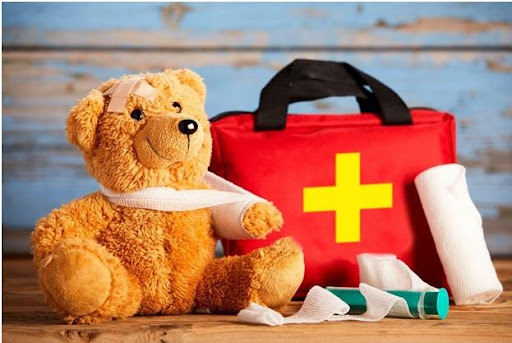
A complete Guide about Pediatric First Aid Training
First aid training is an essential and important training that everyone should consider on taking. Similarly, a very important domain of first aid training is pediatric first aid training. Any person who is related to a field where children are also involved should always try to get pediatric first aid training.
Table of Contents
Pediatric First Aid Training
Children are more prone to injuries because they are curious and in quest of finding different secrets of their surroundings, they often get injuries. That is why it is very important that people surrounded with kids and infants should get a basic knowledge of pediatric first aid. Whenever someone gets an injury or some health emergency, it is very crucial that he should be provided with some basic treatment immediately. This becomes more crucial in case of a child. Children are more sensitive and difficult to handle in case of some illness or injury.
DRABC
In case of pediatric first aid, it is recommended to first perform an initial survey to get an insight of the incident or emergency. In this way the person providing first aid will get a clear picture of the incident and this will help him in handling the situation in a more professional way. DRABC is an acronym that is used to describe the process through which an initial survey is performed in pediatric first aid.
Danger: D stands for danger. The first aid provider first asses the danger, this means he makes sure that the place of incident is having no more danger for the passerby or for himself.
Response: R stands for response. This means you have to check the responses of the child or infant. Check properly of he is conscious and breathing properly.
Airway: A stands for airway. Check properly that there will be nothing that could block the airway of a child or infant.
Breathing: B stands for breathing. Check properly that the child or infant is breathing or not. If the child is not breathing normally, prepare to perform CPR immediately.
Circulation: C stands for circulation. In this step you check for any blood circulation problems. If you find any circulation problems, treat them immediately with the help of basic first aid procedures and also call for immediate assistance.
Pediatric First aid for Head Injuries
Children especially toddlers are more prone to minor head injuries. They are always running from here to there and in doing so it is obvious that they often get hurt and get minor head bump as well. That is why it is very important to learn the first aid training for head injuries. Most of the head injuries are minor but if you find out on assessing the child that the head injury is major, you should immediately call a doctor or an ambulance.
For a minor injury you should give first aid to the child. First try to stop the bleeding as soon as possible. This can be done through an ice pack. You can also wrap the ice pack around the injured area to stop the bleeding. Observe the child for next 24 hours to see for any signs of serious injury.
Observe and look for the following signs and symptoms in the child to find out if the head injury is major or not.
- The child becomes unconscious and becomes confused about the surroundings.
- The child will be having trouble in thinking or concentrating.
- The child will not be able to understand simple questions and will not be able to give answers.
- The child will be having difficulty in reminding things.
- The child might face irregular sleeping patterns.
- Nausea or vomiting with smudged vision.
If you feel some of the above symptoms in a child having head injury, consult the doctor immediately.
Pediatric First Aid for Burns
The baby skin is 15 times thinner as compared to adult skin. That is why in case of a burn, a child gets more hurt and the injury is more severe. The severity of pain is also intense for babies and toddlers. Perform the following steps in case of burns.
- If there are blisters, do not take off the clothes.
- If large portion of the body is affected, call the ambulance.
- Do not touch the burnt skin and do not apply any ointment.
- Do not apply any dressing or bandage.
Pediatric First Aid for Bleeding
Children have small amount of blood in their bodies. Therefore, even a small amount of blood loss could be fatal. In case of bleeding, perform the following pediatric first aid steps.
- Lie down the kid so that they do not become fainted.
- Keep the bleeding area above the heart level to slow down the flow of bleeding
- Apply pressure on the area of injury. This will help in stopping or slowing down the blood flow.
Final Comments
Pediatric first aid training is a very useful and helpful training that anyone could get. Therefore, people who are in jobs that are related to children should get pediatric first aid training course to help the children in case of any emergency.





No Comment